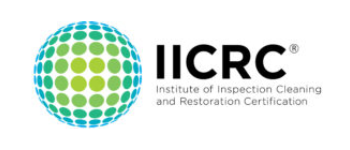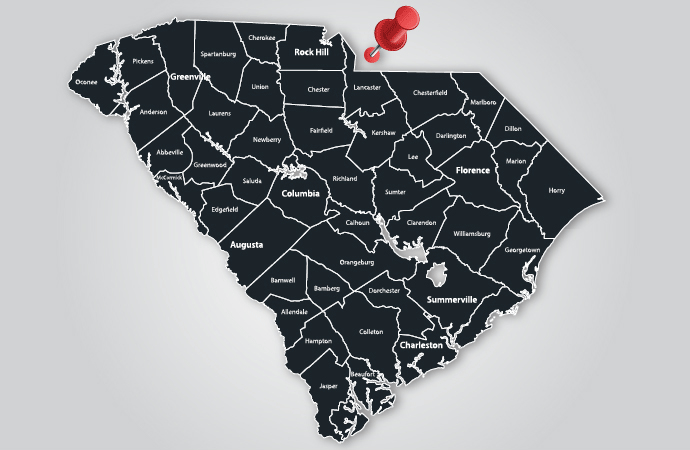Why Basements Leak
If you ever find a leak in your basement, it’s more than likely not the first one. Water seepage is one of the most common problems in basements. Statics from insurance claims inform us that 98% of basements experience some kind of water damage sooner or later. And it’s a problem that should be addressed immediately to insure that other problems like water damage and mold don’t rear their ugly head.
No matter the age of your South Carolina home, if you have a basement, there’s a possibility of leaks. And if they’re not leaking, they tend to be damp and musty places. Homeowners sometimes fail to remember that the basement foundation is the most critical part of the house. It keeps a house solid and stable and shoulders the weight of the entire structure. But there are ways the strength of the foundation can be weakened. One factor is called the clay bowl effect and another is hydrostatic pressure.
The Clay Bowl Effect Can Cause Basement Leaks

When a basement is being built, a contractor will first excavate a hole in the ground big enough to fit the foundation. The result is a clay bowl. Then the footing and walls are built. Once completed, the space outside the walls is refilled with some of the dirt that was dug out to create the original hole. This dirt is known as backfill. No matter how tightly that dirt is then packed, this soil will be looser and more absorbent than the compressed, dense soil around it that’s been undisturbed.
When it rains, the absorbent backfill soil around the foundation gets more soaked than the surrounding soil. This problem is magnified if downspouts and gutters aren’t installed properly or if the water table is higher than normal. Both can then create a clay bowl of water. Additionally, once the backfill settles, the original slope around the house could slant towards the foundation, not away from it, increasing the odds of water seeping into a basement and finding its way through porous walls or cracks.
Sometimes those cracks appear even in brand-new basements. During the backfill process, the heavy soil strikes the basement walls and can cause small fractures, especially before a concrete foundation has had time to cure. Other signs of the clay bowl effect are dark patches on basement walls and higher humidity in the basement than in the rest of the home. The clay bowl effect can also cause radon gas to accumulate in the basement. As the water soaks the soil, it traps radon gas, which can then get in your home through the cracks.
What’s the origin of the term clay bowl? The backfill aftereffect is most noticeable in areas with a high concentration of clay in their soil, like Kansas and some areas of South Carolina. But the precept also applies whenever loose soil is used as fill around a foundation.
Basements Can Leak Because of Hydrostatic Pressure
Hydrostatic pressure, the force of water pressure against a basement’s walls, is closely related to the clay bowl effect. It may come from an overflow of water flowing toward a house, but it’s usually created by saturated soil around a building’s foundation. It’s typically noticed as pooling around a foundation after snowmelt, a rainstorm, or flooding. Once that water builds up, the pressure of its own weight will push it through cracks and minute openings in concrete walls and up through floor slabs. But where water commonly enters a home is through the place where the foundation wall and floor meet, known as the cove joint.
The sort of soil found around a building significantly affects the level of hydrostatic pressure on basement walls. For example, soil that is mostly clay will absorb more water than other kinds of dirt. And the more water it holds, the higher the pressure on a basement wall, enough to push water through tiny cracks causing seepage or even flooding a basement. In extreme cases, so much pressure can form that a basement wall can bow or even fail.
Ways to Stop Basement Leaking
The best way to keep hydrostatic pressure from building up is at the beginning of the construction process. By adding into new construction design items like sump pumps, perforated pipes, French drains, and other products intended specifically for drainage, most seepage problems can be avoided.
But if you’re past the design stage, you’ll need to take other steps toward the prevention of leakage. Employing ways of directing water away from your foundation is your best bet. Here are some suggestions:
- Make sure your gutters and downspouts are directing water away from your foundation.
- Check that the grade of your property and all other surfaces (patios, driveways, etc.) are sloping away from your home.
- Install a sump pump.
- Install interior drains around the boundary of your foundation. They relieve the hydrostatic pressure and direct water to the sump pump.
- Seal cracks as soon as they become visible.
- Basements usually have poor air circulation, which adds to moist conditions. Install exhaust fans to increase ventilation.
If you have a serious problem with water seepage or flooding in your basement, then it may be worth the cost of having your basement foundation professionally waterproofed. This is especially important if you plan on eventually selling your house as wet basements are a major deterrent to buyers. Wet basements can also lower the value of your home by at least ten percent.
What to Do if Your Basement Floods
If a flooded basement happens to you, call your insurance company immediately and start taking pictures of the damage. Your homeowner’s or flood insurance will help cover the cost of hiring a water damage restoration and remediation professional. Insurance may also pay for damaged or destroyed contents of your home.
Then call South Carolina’s water damage restoration specialists, Kingsley Water Damage Restoration. We’re trained to remove water quickly and safely from your basement and repair the damage left behind as well. We’ll drain the water, then dry and dehumidify the area, removing any sewage or toxins left behind. Once all repairs are made, we’ll sanitize the area to prevent mold growth and other health risks so that you’ll have a healthy and safe home to return to.





